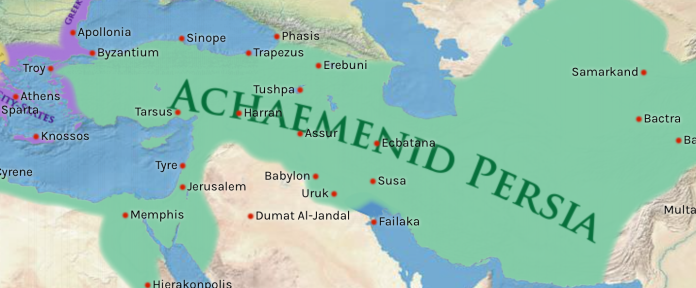The temples of ancient Egypt represent one of the most enduring monumental expressions of religion and cosmology in the history of the world, serving as the very heart of pharaonic culture for nearly three thousand years.
Over the course of the millennia, the temples and their associated ideology survived eras of great internal crises, such as the civil upheavals of the First Intermediate Period (2181 – 2055 BC) and the politicized religious reforms of the Amarna Period (1353 – 1322 BC).

The temples also thrived during later eras of foreign occupation. During the Late Period (664-332 BC), Egypt twice fell under the ruler-ship of the Achaemenid Empire, but the Persian rulers—who revered Egyptian traditions—allowed temple practices to continue.
In 332 BC, the Persian dominance of Egypt ended with the conquest of Alexander the Great, and under the succeeding Ptolemaic Dynasty the construction and use of traditional temples continued, albeit embellished with Greek cultural elements and styles in the spirit of the Greco-Egyptian syncretism of the age.
The Ptolemies—who adopted the title and the symbolism of pharaoh—supported the Egyptian priesthood, and the temples continued to serve as the central axes of religion and culture.



Egyptian temple culture would also persevere during the Roman occupation, which began when Octavian defeated Cleopatra VII—the last Ptolemaic ruler—in 30 BC.
In the earlier part of the Roman Imperial Period temple construction continued and Egyptian priests were renowned for their wisdom throughout the Empire, as mystics and philosophers traveled to cities such as Alexandria and Thebes to learn from the masters.

However, during the Crisis of the Third Century the temples fell into a state of disrepair and the priesthood was disenfranchised.
With the ensuing ascension of Christianity as the Imperial religion, Egyptian temple culture entered its final decline under the weight of Imperial edicts and the destruction caused by rampaging priests and bishops.

The Neteru, the Pharaoh, and Ma’at
The millennia-spanning endurance of Egyptian temple culture seems especially appropriate in light of the fact that the very purpose of the temples was to embody eternal principles in the temporal world.
Although personified and given anthropomorphic and theriomorphic representations in myth and iconography, the Egyptian gods—the Neteru—represented metaphysical principles or ideals manifesting from the beginning of creation as the perceptible and imperceptible elements making up the entire universe.
These metaphysical entities were born out of the supreme creator dwelling in the atemporal, primordial realm of the Nun at the First Time.
Ancient Origins / ABC Flash Point News 2024.











































Proof of ancient alien civilizations for the ones that want to open their eyes?
The Hyksos who invaded Egypt around 1600 BC were in reality the race from west Asia that were eventually defeated by the Egyptians and thrown out of Egypt ,some of their artifacts exist as well as parts of chariots bows etc . Unlike the myth of the exodus of the Hebrews by Moses in which no real evidence is forthcoming of having them in force there either in hieroglyphics nor unearthed archaeological excavations. If anybody has any real non historical revisionism FACTS then please let me know . Egypt was invaded and taken over many times at later dates and… Read more »